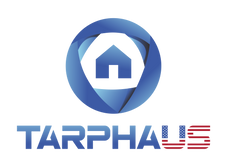
DOT Inspections Made Easy: Conquer the Road with Your Flatbed Cargo Control Arsenal
For flatbed drivers, navigating the open road is just one part of the job. Acing Department of Transportation (DOT) inspections adds another layer of importance – ensuring your cargo is secure not only for safety but also to avoid costly delays and fines. But fret no more! With the right knowledge and equipment, you can transform DOT inspections into a breeze.
This guide equips you with the essential cargo control gear and knowledge to conquer your next DOT inspection with confidence.
Arming Your Flatbed: Must-Have Cargo Control Gear
-
Winch Straps: The Workhorses of Securement:
- Invest in a variety of winch straps with different working load limits (WLL) to handle various cargo weights. Common WLLs for flatbeds include 3,500 lbs., 5,000 lbs., and 10,000 lbs.
- Double-check for damage! Look for any cuts, frays, or worn-out ratchets that could compromise their effectiveness. Replace damaged straps immediately – a single faulty strap can jeopardize your entire load.
-
Webbing Slings & Chains: Taming Irregular Shapes and Heavy Loads:
- Webbing slings and chains provide additional security for irregularly shaped cargo or heavy objects.
- Ensure they are certified for their weight capacity and have no missing hooks, damaged links, or excessive wear. Consider color-coding your slings based on weight capacity for quick identification during inspections.
-
Edge Protectors: The Shields of Your Straps:
- Metal edges on cargo can easily cut through straps, rendering them useless.
- Edge protectors distribute the tension and prevent strap damage, keeping your load secure and your equipment intact.
- Choose edge protectors with appropriate weight ratings for your cargo and ensure they fully cover any sharp edges.
-
Blocking & Bracing: The Pillars of Stability:
- For maximum stability, especially with palletized cargo, utilize wheel chocks, lumber blocks, and other approved bracing materials.
- Proper blocking prevents load shifting during transport, a major red flag for DOT inspections.
- Invest in different sizes and shapes of blocking materials to accommodate various cargo configurations.
Beyond the Gear: Documentation is Your Lifeline
Having the right equipment is only half the battle. Here's the documentation you need to keep readily available for inspectors:
- Cargo Securement Certificates: These certificates are proof that your straps and chains meet DOT standards. Keep them readily accessible in a designated folder or binder for quick presentation during inspections.
- DOT Inspection Manual: Knowledge is power! Familiarize yourself with the Federal Motor Carrier Safety Administration's (FMCSA) Cargo Securement Regulations. Having a physical copy of the manual in your truck demonstrates your commitment to compliance and allows you to quickly reference specific regulations if needed.
Proactive Strategies for Inspection Success
Don't wait for inspections to check your equipment! Here are some proactive strategies to ensure you're always prepared:
-
Regular Equipment Maintenance: Establish a pre-trip inspection routine to check your cargo control equipment thoroughly.
- Look for signs of wear and tear, such as frayed webbing, loose stitching on straps, or rusted chains.
- Replace any damaged items immediately – your safety and compliance depend on it.
-
Proper Securement Techniques: Understanding proper tie-down methods for different cargo types is crucial.
- Invest in training or reference FMCSA guidelines for securement best practices.
- Mastering various securement techniques demonstrates your expertise to inspectors and ensures the safety of your cargo.
Bonus Tip: Embrace Technology
There are several cargo securement apps available that can help you calculate the required number and type of straps needed for your specific load. These apps can be valuable tools for ensuring you're compliant and prepared for inspections.
Conclusion: Confidence Through Preparation
By having the right cargo control gear, staying informed about DOT regulations, and implementing proactive maintenance and securement practices, you can transform DOT inspections from stressful roadblocks into opportunities to showcase your professionalism and commitment to safety. So, stock up on your essential equipment, keep your paperwork in order, and hit the road with the confidence of a DOT inspection champion!
